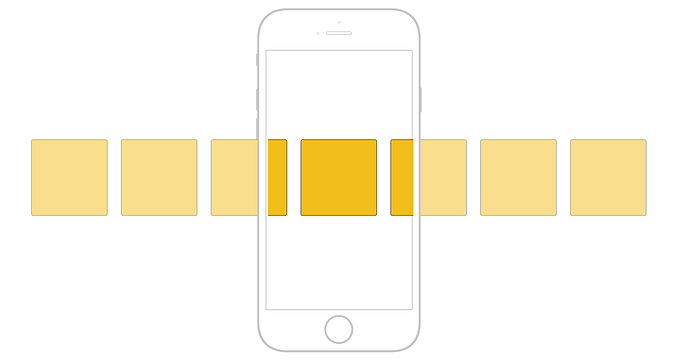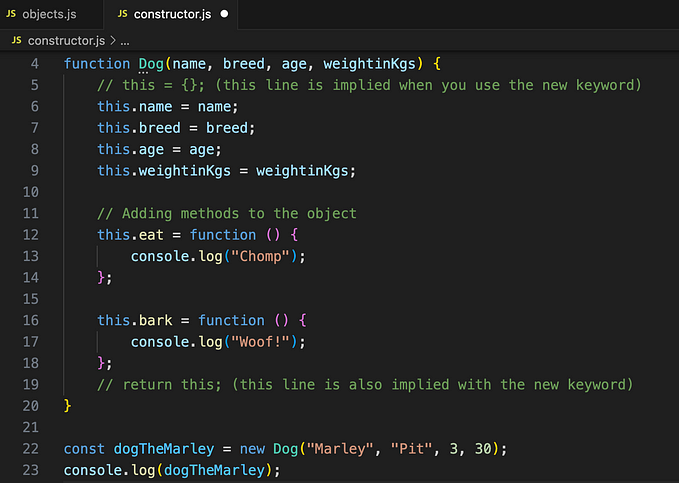JavaScript: The Keyword ‘This’ for Beginners

Preface
Hey! I’m Brandon. I created codeburst.io and I write JavaScript tutorials and articles to help beginners better understand the inner workings of Web Development. If you have any questions about the article, leave a comment and I’ll get back to you, or find me on twitter @brandonmorelli. Lastly, when you’re ready to really dive into Web Development, Check out the Best Courses for Learning Full Stack Web Development
Understanding the keyword this in JavaScript, and what it is referring to, can be a little complicated at times. Fortunately, there are five general rules that you can use to determine what this is bound to. There are some cases that these rules don’t cover, but this should help you through the vast majority of cases… So, lets get started!
- The value of
thisis usually determined by a functions execution context. Execution context simply means how a function is called. - It’s important to know that
thismay be different (refer to something different) each time the function is called. - It’s okay if #1 and #2 don’t make sense yet. They will by the end of this article.
#1 Global Object
Alright, we got the definition out of the way, now lets back up for a minute. Open up your Chrome Developer Console (Windows: Ctrl + Shift + J)(Mac: Cmd + Option + J) and type the following:
console.log(this);What do you get?
// Window {...}The window object! That’s because in the global scope, this refers to the global object. In a browser, the global object is the window object.
To help you better understand why this refers to the window object, let’s look at it more in depth. In your console, create a new variable and assign it to your name:
var myName = 'Brandon';We can access this new variable again by calling it:
myName
// returns -> 'Brandon'But did you know that every variable you declare in the global scope is attached to the window object? Lets test this:
window.myName
// returns -> 'Brandon'window.myName === myName
// returns -> true
Cool. So earlier when we ran console.log(this) in global context, we know that this was being called on the global object. Since the global object in the browser is the window object, it makes sense that:
console.log(this)
// returns -> window{...}Now lets put this inside of a function. Recall our earlier definition: The value of this is usually determined by how a function is called. With that in mind, what do you expect this function to return? In your browser console, copy the code below and hit enter.
function test() {
return this;
}
test()Once again, the keyword this returns to global (window) object. This happens because the keyword this is not inside of a declared object, so it defaults to the global (window) object. This concept may be a little tough to understand right now, but it should make more sense as you read on. One thing to note, if you are using strict mode, in the above example this will be undefined
#2 Declared Object
When the keyword this is used inside of a declared object, the value of this is set to the closest parent object the method is called on. Take a look at the code below where I declare the object person and use this inside the method full
var person = {
first: 'John',
last: 'Smith',
full: function() {
console.log(this.first + ' ' + this.last);
}
};person.full();
// logs => 'John Smith'
To better illustrate that this is in fact referencing the person object, copy the below code into your browser console. It’s mostly the same code as above, we’re just going to console.log(this) instead, so we can see what it returns.
var person = {
first: 'John',
last: 'Smith',
full: function() {
console.log(this);
}
};person.full();
// logs => Object {first: "John", last: "Smith", full: function}
As you’ll see, the console returns the person object, proving this has taken the value of person
One last thing before we move on. Remember when we said the value of this is set to the closest parent object the method is called on? What would you expect to happen in a scenario where we have nested objects? Take a look at the code sample below. We’ve got a person objected that contains the same first, last, and full keys as before. This time, we’ve also nested in the personTwo object. Person two contains the same three keys.
var person = {
first: 'John',
last: 'Smith',
full: function() {
console.log(this.first + ' ' + this.last);
},
personTwo: {
first: 'Allison',
last: 'Jones',
full: function() {
console.log(this.first + ' ' + this.last);
}
}
};What’s going to happen when we call our two full methods? Let’s find out.
person.full();
// logs => 'John Smith'person.personTwo.full();
// logs => 'Allison Jones'
Again, the value of this is set to the closest parent object the method is called on. When person.full() is invoked, inside the function this is bound to the person object. Meanwhile, when person.personTwo.full() is invoked, inside the full function, this is bound to the personTwo object!
#3 The New Keyword
When the new keyword is used(a constructor), this is bound to the new object being created.
Lets look at an example:
function Car(make, model) {
this.make = make;
this.model = model;
};Above, you might guess that this is bound to the global object — and you’d be correct…until we add in the keyword new . When we use new the value of this is set to an empty object, in this case, myCar.
var myCar = new Car('Ford', 'Escape');console.log(myCar);
// logs => Car {make: "Ford", model: "Escape"}
For this to make sense, you need to understand what exactly the new keyword does. That’s an entirely new topic in itself though. So for now, if you’re unsure and you see the keyword new, just know that this is referring to a brand new, blank object.
#4 Call, Bind, Apply
Last, but certainly not least, we can actually set the value of this explicitly with call(), bind(), and apply() . The three are very similar, but it’s important to understand the minor differences.
Call and Apply are each invoked immediately. Call takes any number of parameters: this, followed by the additional arguments. Apply takes only two parameters: this, followed by an array of the additional arguments.
You following me still? An example should make this clearer. Look at the code below. We’re trying to add numbers. Copy this into your browser console and call the function.
function add(c, d) {
console.log(this.a + this.b + c + d);
}add(3,4);
// logs => NaN
The add function logs NaN (not a number). That’s because this.a and this.b are undefined. They don’t exist. And you can’t add a number to something that is undefined.
Lets introduce an object to the equation. We can use call() and apply() to call the function with our object:
function add(c, d) {
console.log(this.a + this.b + c + d);
}var ten = {a: 1, b: 2};add.call(ten, 3, 4);
// logs => 10add.apply(ten, [3,4]);
// logs => 10
When we use add.call() the first parameter is what this should be bound to. The subsequent parameters are passed into the function we are calling. Thus, in add() , this.a refers to ten.a and this.b refers to ten.b and we get 1+2+3+4 returned, or 10.
add.apply() is similar. The first parameter is what this should be bound to. The subsequent parameter is an array of arguments to be used in the function.
What about Bind? The parameters in bind() are identical to call() but bind() is not invoked immediately. Instead, bind() returns a function with the context of this bound already. Because of this, bind() is useful when we don’t know all of our arguments up front. Again, an example should help with your understanding:
var small = {
a: 1,
go: function(b,c,d){
console.log(this.a+b+c+d);
}
}var large = {
a: 100
}
Copy the above into your console. Then call
small.go(2,3,4);
// logs 1+2+3+4 => 10Cool. Nothing new here. But, what if we want to use the value of large.a instead? We can use call/apply:
small.go.call(large,2,3,4);
// logs 100+2+3+4 => 109Now, what if we don’t know all 3 arguments yet? We can use bind:
var bindTest = small.go.bind(large,2);If we console.log our variable above, bindTest , we can see what we’re working with
console.log(bindTest);
// logs => function (b,c,d){console.log(this.a+b+c+d);}Remember, with bind a function is returned that already has this bound! So our this has been successfully bound to our large object. We’ve also already passed in our second argument as the number 2. Later, when know the rest of the arguments we can pass them in:
bindTest(3,4);
// logs 100+2+3+4 => 109For clarity, here is all of the code together in one block. Look it over, and copy it into your console to really understand what is happening!
var small = {
a: 1,
go: function(b,c,d){
console.log(this.a+b+c+d);
}
}var large = {
a: 100
}small.go(2,3,4);
// logs 1+2+3+4 => 10var bindTest = small.go.bind(large,2);console.log(bindTest);
// logs => function (b,c,d){console.log(this.a+b+c+d);}bindTest(3,4);
// logs 100+2+3+4 => 109
#5 Arrow Functions
This is such a big topic in itself that I wrote an entire article on it: Arrow Functions for Beginners
Conclusion
You made it! Under most circumstances you should now be able to deduce what exactly this is referring to! Remember a few things:
- The value of
thisis usually determined by a functions execution context. - In the global scope,
thisrefers to the global object (the window object). - When the
newkeyword is used(a constructor),thisis bound to the new object being created. - We can set the value of
thisexplicitly withcall(),bind(), andapply() - Arrow Functions don’t bind
this— insteadthisis bound lexically (i.e. based on the original context)
❤ If this post was helpful, please hit the little heart! And don’t forget to check out my other recent articles:
- JavaScript: Regular Expressions For Beginners
- 100+ Free Resources to Learn Full Stack Web Development
- And when you’re ready to really dive into Web Development — 5 Best Udemy Courses for Learning Full Stack Web Development









